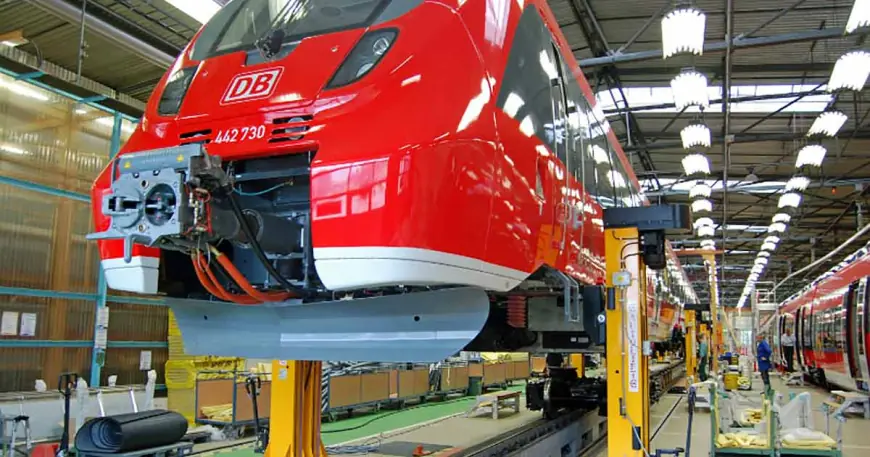India Railway Equipment Market 2030: Technology Innovations
Despite the positive growth outlook, the market still faces challenges such as high project costs, land acquisition issues, and bureaucratic hurdles.

Market Overview
According to the latest TechSci Research analysis, the India Railway Equipment Market, valued at USD 12.31 billion in 2024, is projected to reach USD 15.9 billion by 2030, registering a CAGR of 3.61% during the forecast period. The sector’s momentum is fueled by expanding urban transportation projects, government-led infrastructure modernization, technological advancements, and increasing emphasis on safety and sustainability.
India’s vast railway network is one of the largest in the world, serving as a lifeline for passenger movement and freight logistics. This scale creates significant demand for a wide range of railway equipment — from rolling stock and signaling systems to station infrastructure and electrification solutions. With rising population density in urban areas and the government’s push toward high-speed, efficient, and sustainable transport systems, the market is poised for robust growth in the coming years.
Industry Key Highlights
- Market Size: USD 12.31 billion (2024) projected to reach USD 15.9 billion (2030)
- Growth Rate: CAGR of 3.61% (2024–2030)
- Fastest Growing Region: Southern India
- Major Growth Drivers: Urban transportation projects, safety initiatives, and electrification
- Key Segments: Rolling stock, railway infrastructure, and others
- Top Players: CRRC Corp. Ltd, Siemens AG, Bombardier Inc., Alstom SA, Wabtec Corp., Hyundai Rotem, Stadler Rail AG, The Greenbrier Companies, Trinity Industries Inc.
Download Free Sample Report: https://www.techsciresearch.com/sample-report.aspx?cid=4216
Market Segmentation
1. By Type
- Rolling Stock: Includes locomotives, passenger coaches, freight wagons, and specialized maintenance vehicles.
- Railway Infrastructure: Covers tracks, signaling systems, electrical systems, and station facilities.
- Others: Ancillary equipment supporting railway operations.
2. By Application
- Locomotives
- Diesel Multiple Units (DMUs)
- Electric Multiple Units (EMUs)
- Freight Vehicles
- Others
3. By Region
- North
- South
- East
- West
Emerging Trends in the India Railway Equipment Market
1. Rapid Urbanization Driving Metro and Suburban Rail Projects
India’s urban population is expanding at an unprecedented rate, leading to congestion in major cities. Metro rail and suburban rail systems are increasingly being adopted as solutions for efficient urban mobility. With projects in cities such as Bengaluru, Hyderabad, Mumbai, and Ahmedabad, there is strong demand for rolling stock, advanced signaling, and modern station infrastructure.
2. Electrification and Green Energy Adoption
The government’s commitment to achieving 100% railway electrification by 2030 is significantly influencing equipment demand. Electrification not only reduces carbon emissions but also lowers operating costs. This shift is creating opportunities for suppliers of electric locomotives, traction systems, and renewable-powered railway infrastructure.
3. High-Speed Rail and Technological Integration
The Mumbai–Ahmedabad High-Speed Rail project has sparked interest in bullet train technology and advanced signaling systems. Adoption of ETCS (European Train Control System), Positive Train Control (PTC), and IoT-based predictive maintenance systems is expected to transform railway operations, enhancing safety and efficiency.
4. Multi-Modal Transport Integration
An integrated approach linking railways with metro, bus, and other public transport systems is gaining traction. The goal is to offer seamless connectivity, unified ticketing systems, and synchronized schedules, improving passenger convenience.
5. Smart Stations and Passenger Amenities
The Smart Station Development initiative focuses on modernizing key stations with amenities such as AI-based surveillance, energy-efficient lighting, advanced ticketing systems, and real-time passenger information displays. This trend drives the need for high-quality station equipment and infrastructure.
Market Drivers
1. Government Infrastructure Push
The Indian government is making significant investments under initiatives like PM Gati Shakti, National Infrastructure Pipeline (NIP), and Dedicated Freight Corridors (DFC). These projects require large-scale procurement of rolling stock, signaling, and electrification equipment.
2. Increasing Freight and Passenger Demand
Rising industrial activity, e-commerce logistics, and population growth are pushing both freight and passenger transport requirements. This growth directly translates into higher demand for locomotives, freight wagons, and passenger coaches.
3. Safety and Security Upgrades
Safety remains a top priority, leading to deployment of automatic train protection (ATP) systems, upgraded track monitoring equipment, and anti-collision devices. Addressing issues like track trespassing, level crossing accidents, and theft requires modern surveillance and safety equipment.
4. Private Sector Participation
Liberalization policies are encouraging private investments in passenger train operations and freight corridors. Private participation is fostering innovation, better service quality, and demand for premium railway equipment.
5. Technological Advancements
Digital twins, big data analytics, AI-based scheduling, and condition-based monitoring systems are revolutionizing railway operations. These innovations require advanced hardware, software, and integrated equipment.
Regional Insights
Southern India: The Fastest-Growing Region
The South is expected to dominate growth in the coming years, driven by:
- Metro expansions in Bengaluru, Chennai, and Hyderabad
- Electrification and modernization of railway lines
- Increased freight movement to ports such as Chennai and Mangaluru
- High-speed connectivity projects between industrial hubs
Strong regional focus on sustainability, renewable-powered systems, and modern passenger amenities further enhances market potential.
Competitive Analysis
The India Railway Equipment Market is highly competitive, with both domestic and international players offering a broad range of products. Key strategies include joint ventures, technology transfer agreements, localization of manufacturing, and after-sales service expansion.
Leading Companies
- CRRC Corp. Ltd – Global leader in rolling stock manufacturing with advanced technology solutions.
- Siemens AG – Offers signaling, electrification, and automation systems.
- Bombardier Inc. – Known for urban rail solutions, now integrated under Alstom.
- Alstom SA – Provides complete railway solutions including high-speed trains and smart signaling.
- Wabtec Corp. – Specializes in locomotives, braking systems, and digital railway solutions.
- Hyundai Rotem – Focuses on rolling stock for metro and mainline applications.
- Stadler Rail AG – Supplies passenger trains and trams for urban and regional networks.
- The Greenbrier Companies – Strong in freight wagon manufacturing.
- Trinity Industries Inc. – Specializes in freight rolling stock and related equipment.
These players compete on technology innovation, cost efficiency, and after-sales service quality. Strategic partnerships with Indian Railways and metro corporations are key to winning large-scale contracts.
Future Outlook
The India Railway Equipment Market is set for steady growth, propelled by a combination of government investments, rising passenger and freight traffic, and modernization efforts. By 2030:
- Complete electrification will create a greener, more cost-effective railway network.
- High-speed rail corridors will reshape intercity travel.
- Technology integration will enhance operational safety and efficiency.
- Multi-modal integration will make public transport more accessible and attractive.
- Increased private participation will improve service quality and competitiveness.
Given the sector’s vast potential, both domestic and global manufacturers stand to benefit by aligning with India’s long-term transport infrastructure goals.
10 Benefits of the Research Report
- Comprehensive Market Insights – Detailed analysis of market size, growth rate, and segments.
- Future Growth Forecast – Reliable projections to support strategic planning.
- Competitive Landscape Mapping – Profiles and strategies of key players.
- Emerging Trends Identification – Insights into technological and market shifts.
- Regional Performance Analysis – Growth drivers and challenges in each region.
- Investment Opportunities – Sectors and regions with the highest potential.
- Policy Impact Assessment – Evaluation of regulatory and government initiatives.
- Consumer Demand Insights – Trends in passenger and freight requirements.
- Risk and Challenge Analysis – Market entry and operational risk factors.
- Strategic Recommendations – Actionable guidance for stakeholders.
Contact Us-
Mr. Ken Mathews
708 Third Avenue,
Manhattan, NY,
New York – 10017
Tel: +1-646-360-1656
Email: [email protected]
Website: www.techsciresearch.com
What's Your Reaction?
 Like
0
Like
0
 Dislike
0
Dislike
0
 Love
0
Love
0
 Funny
0
Funny
0
 Angry
0
Angry
0
 Sad
0
Sad
0
 Wow
0
Wow
0


















































